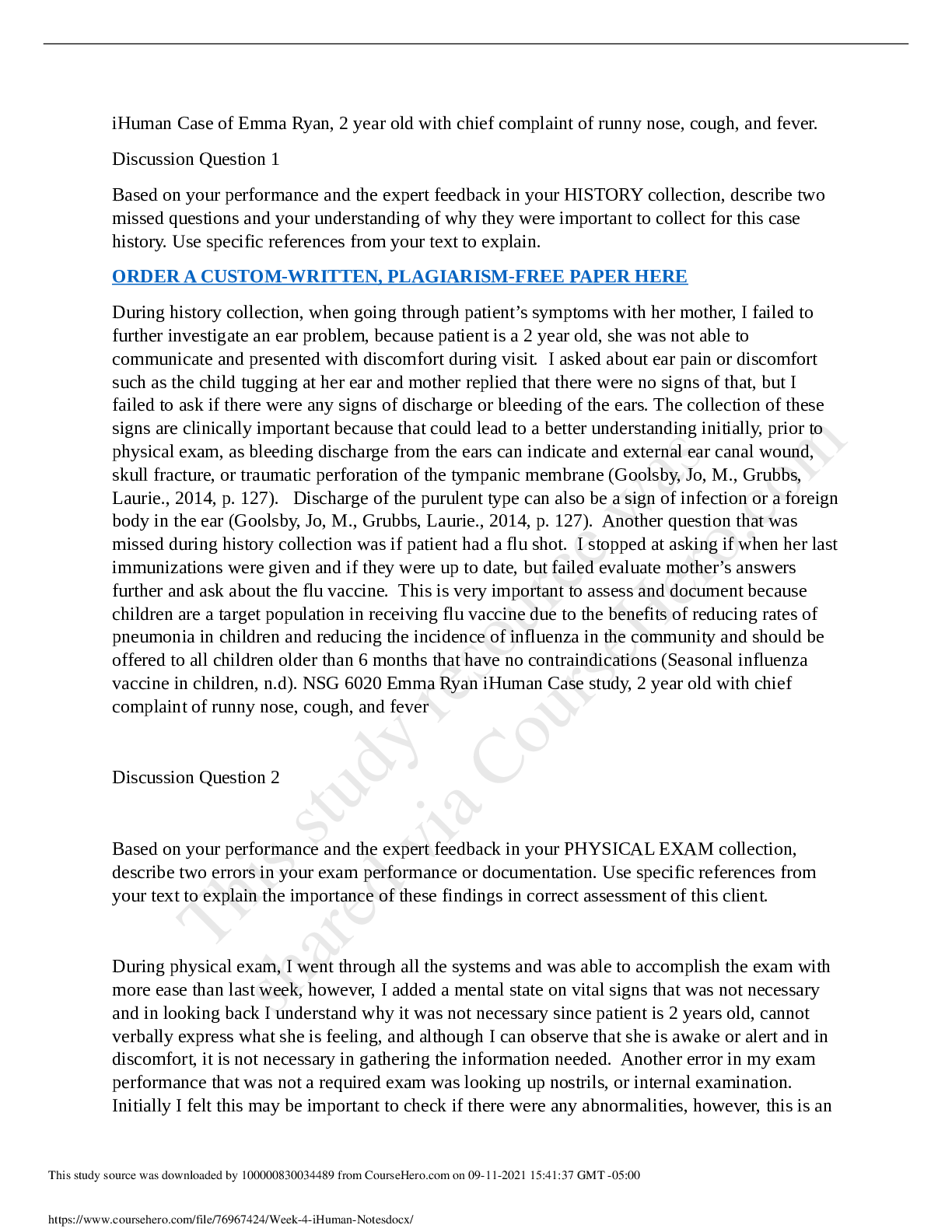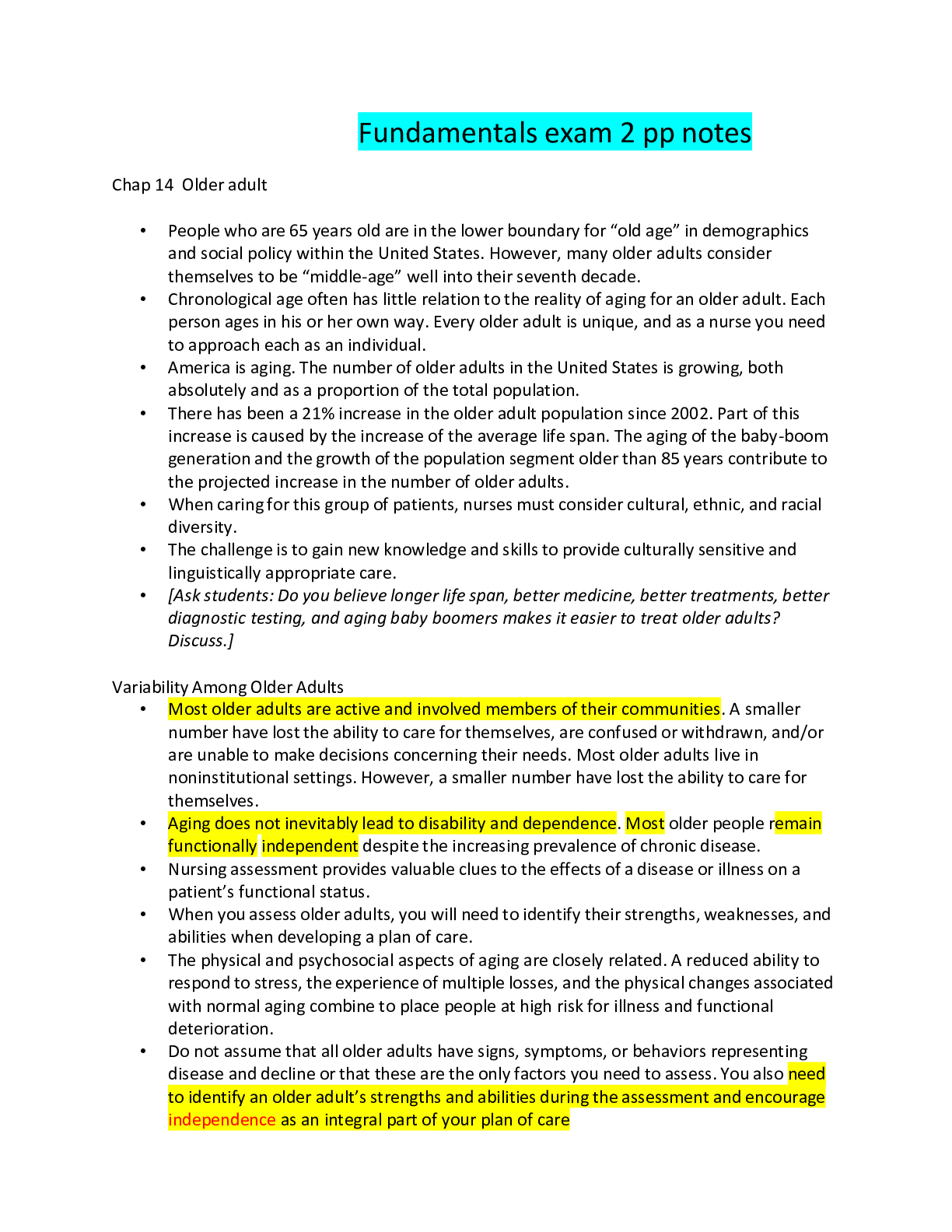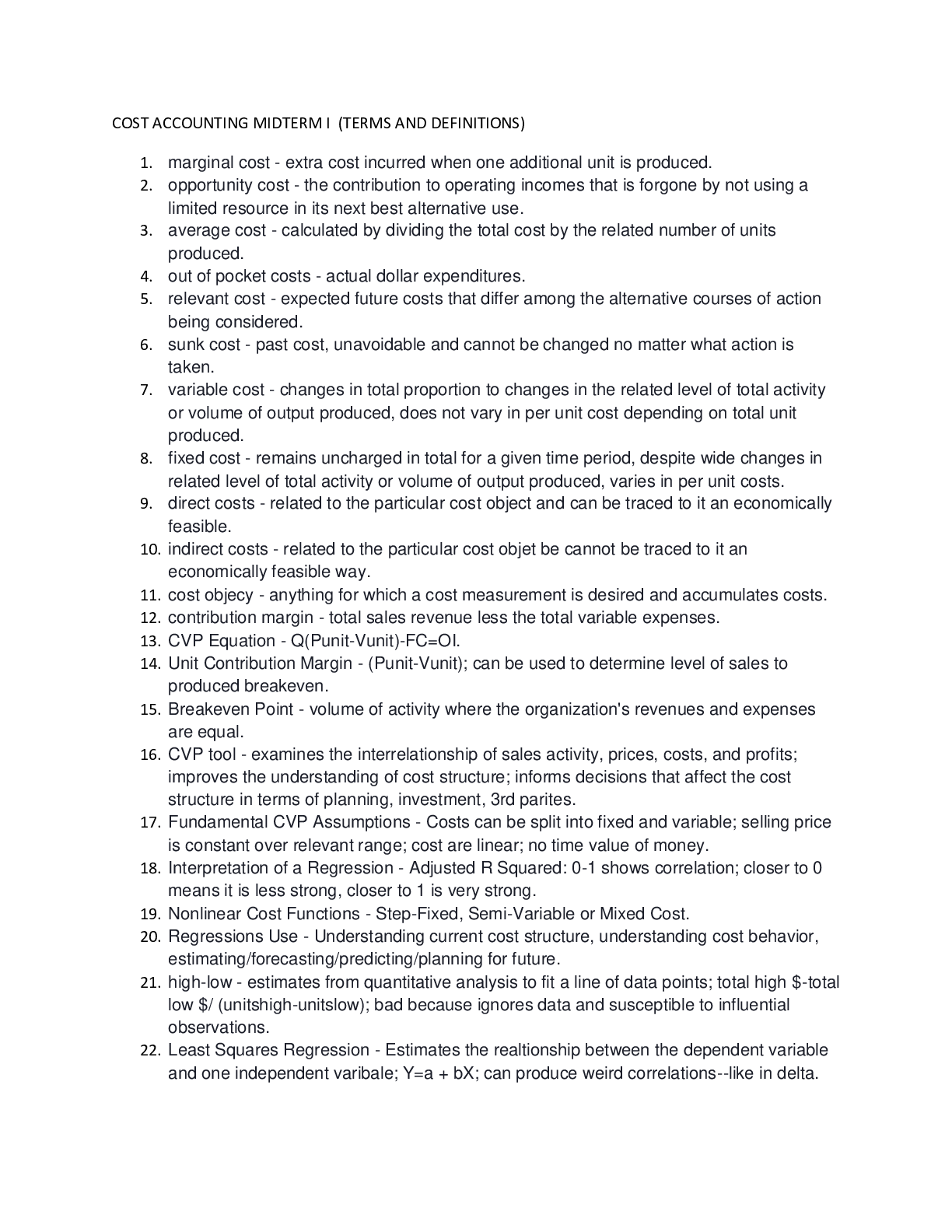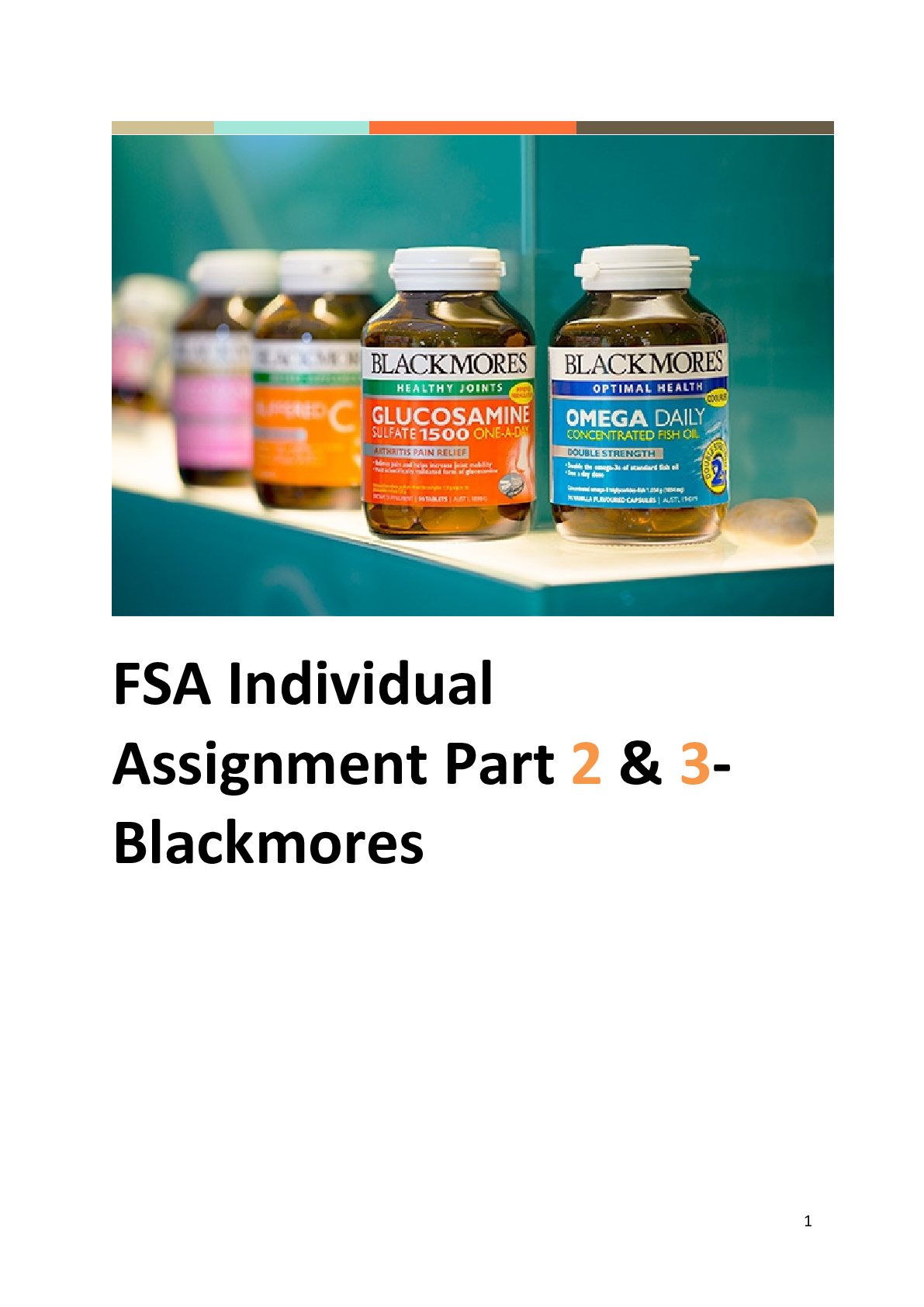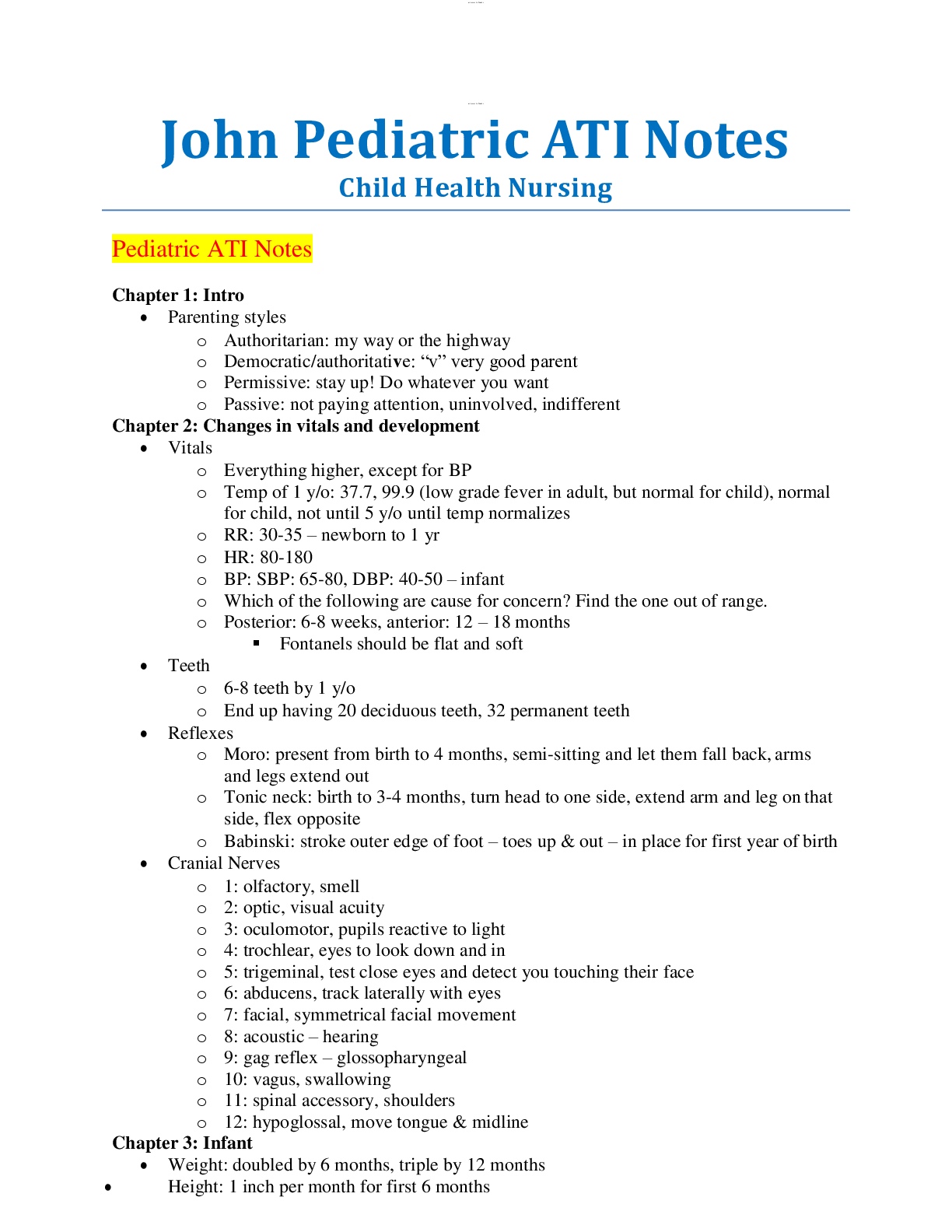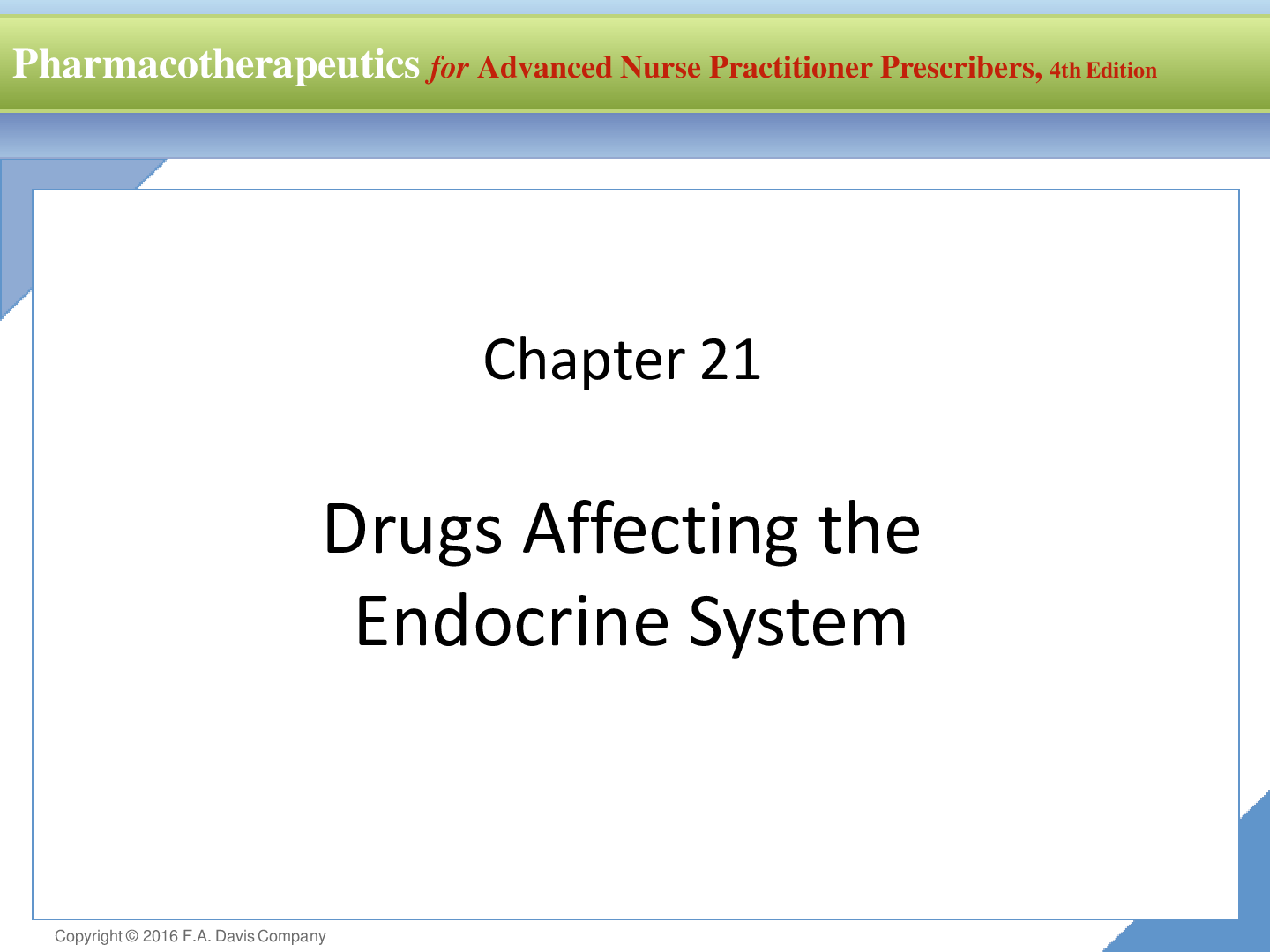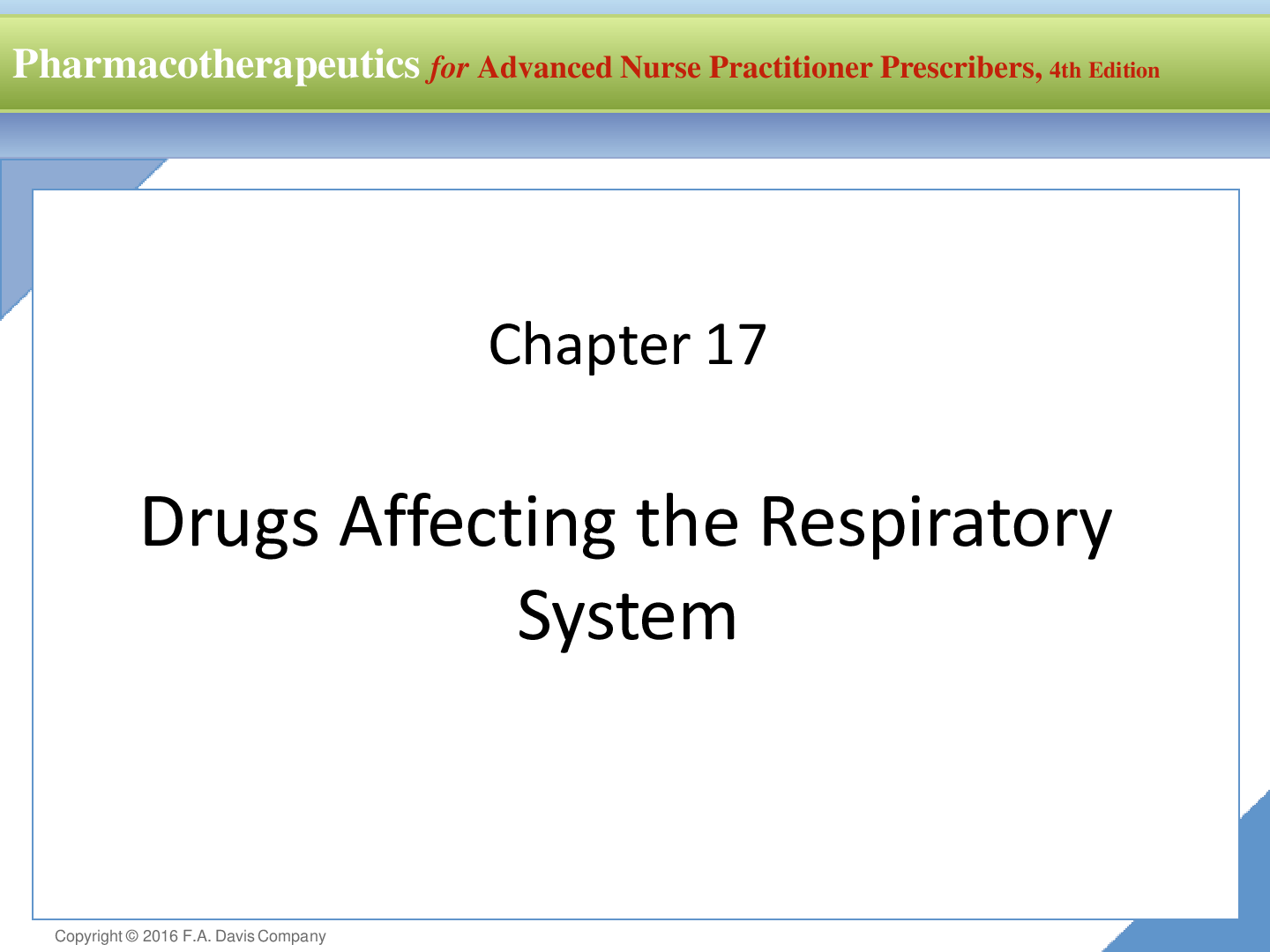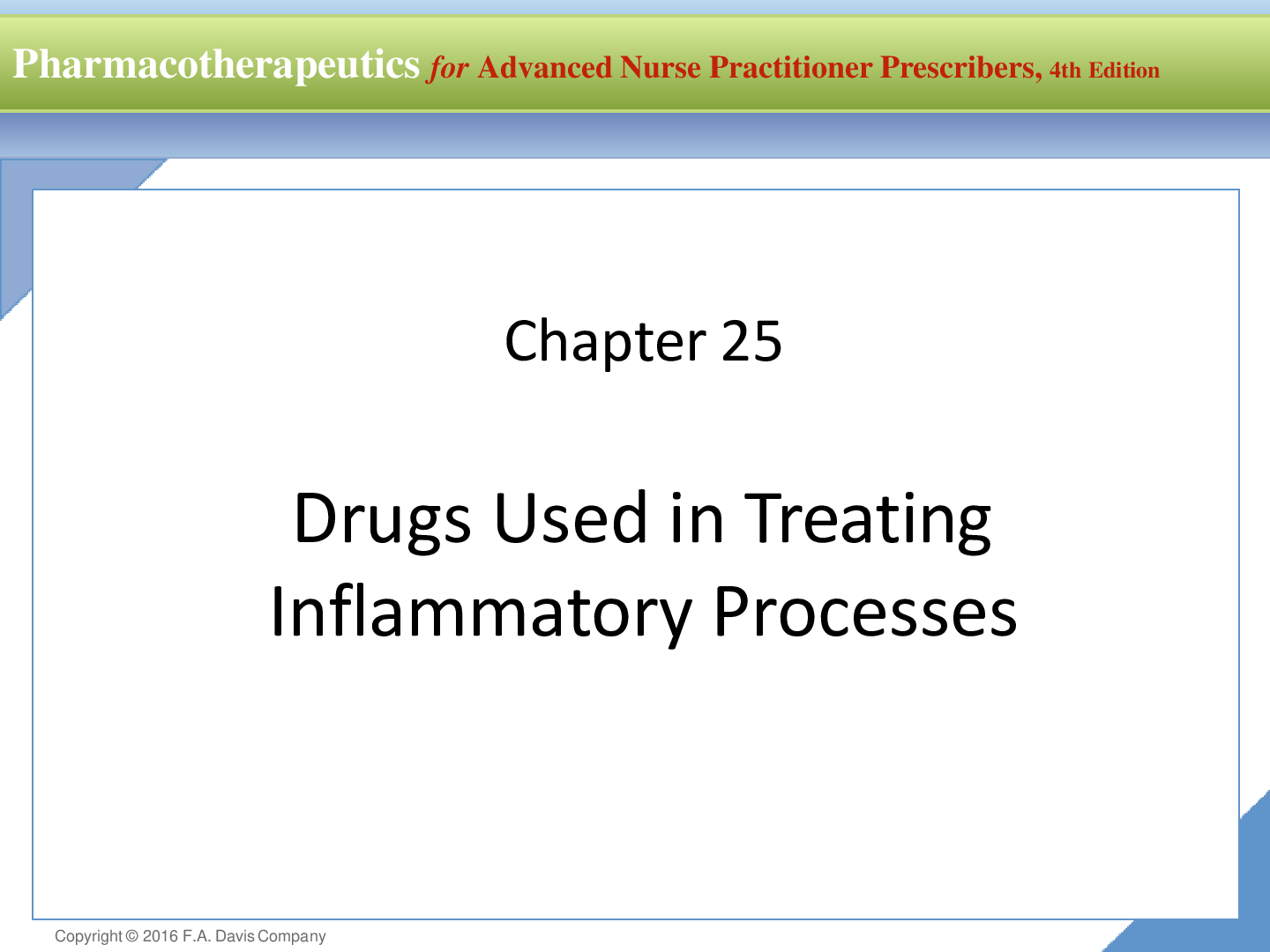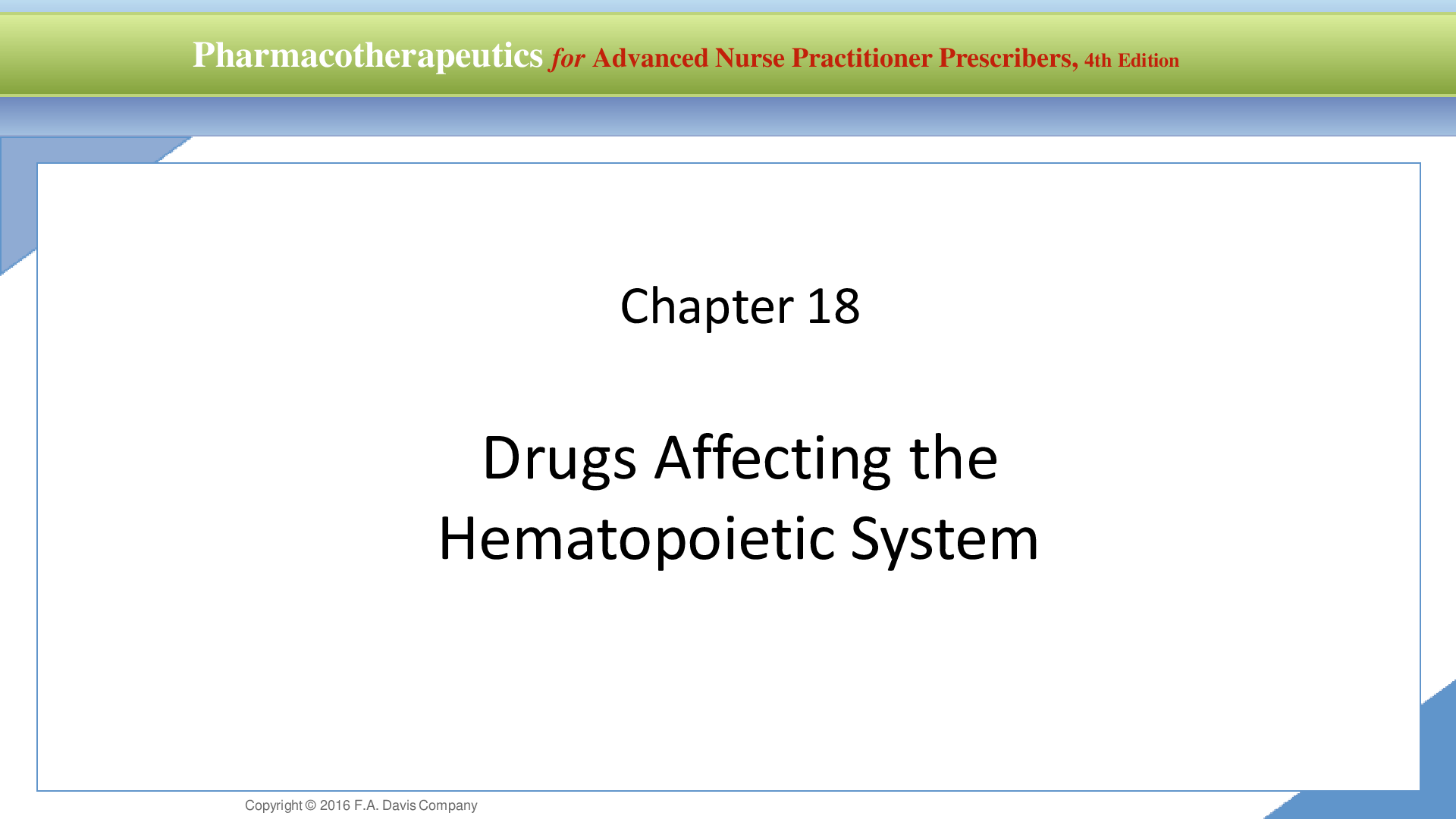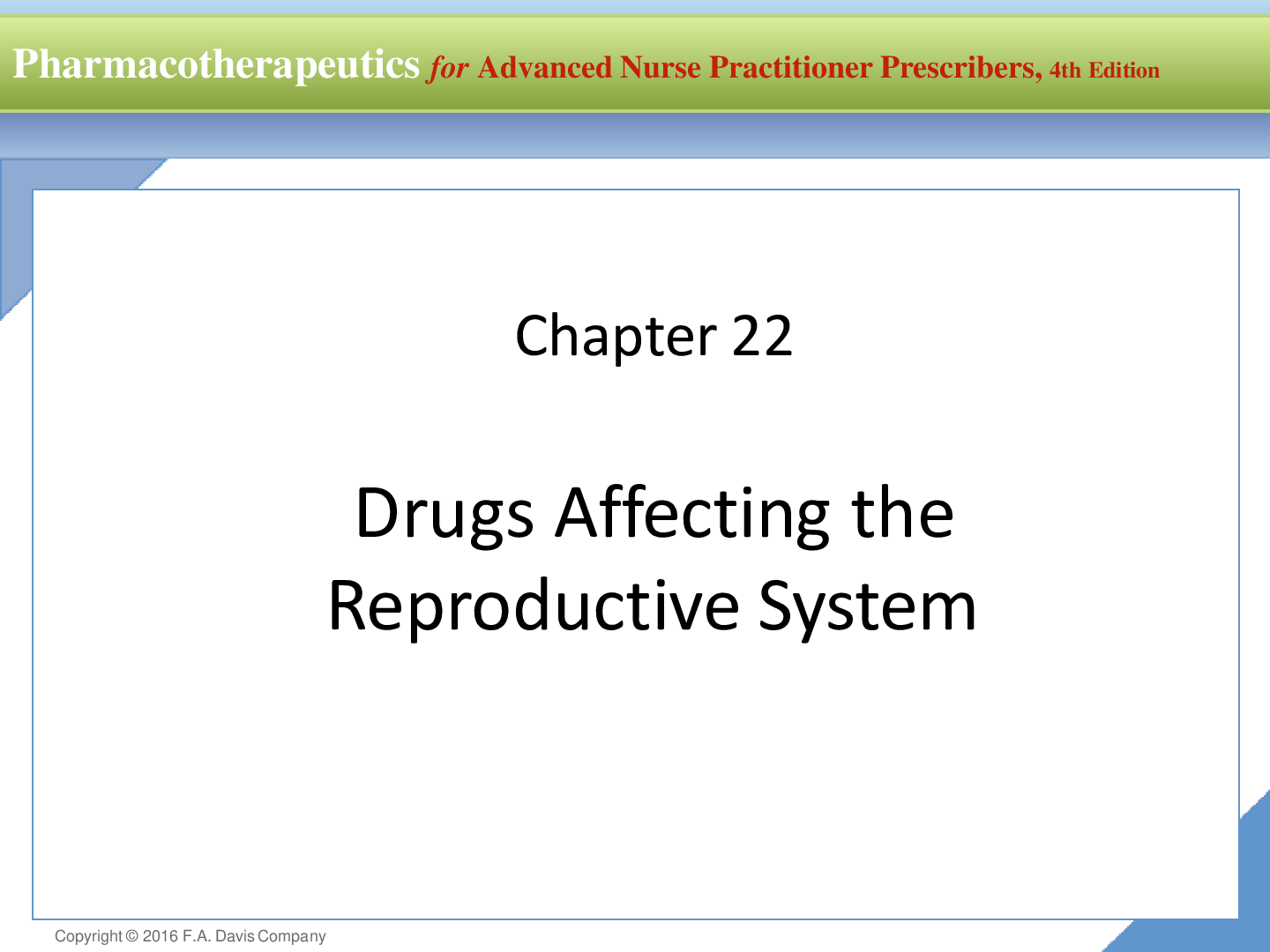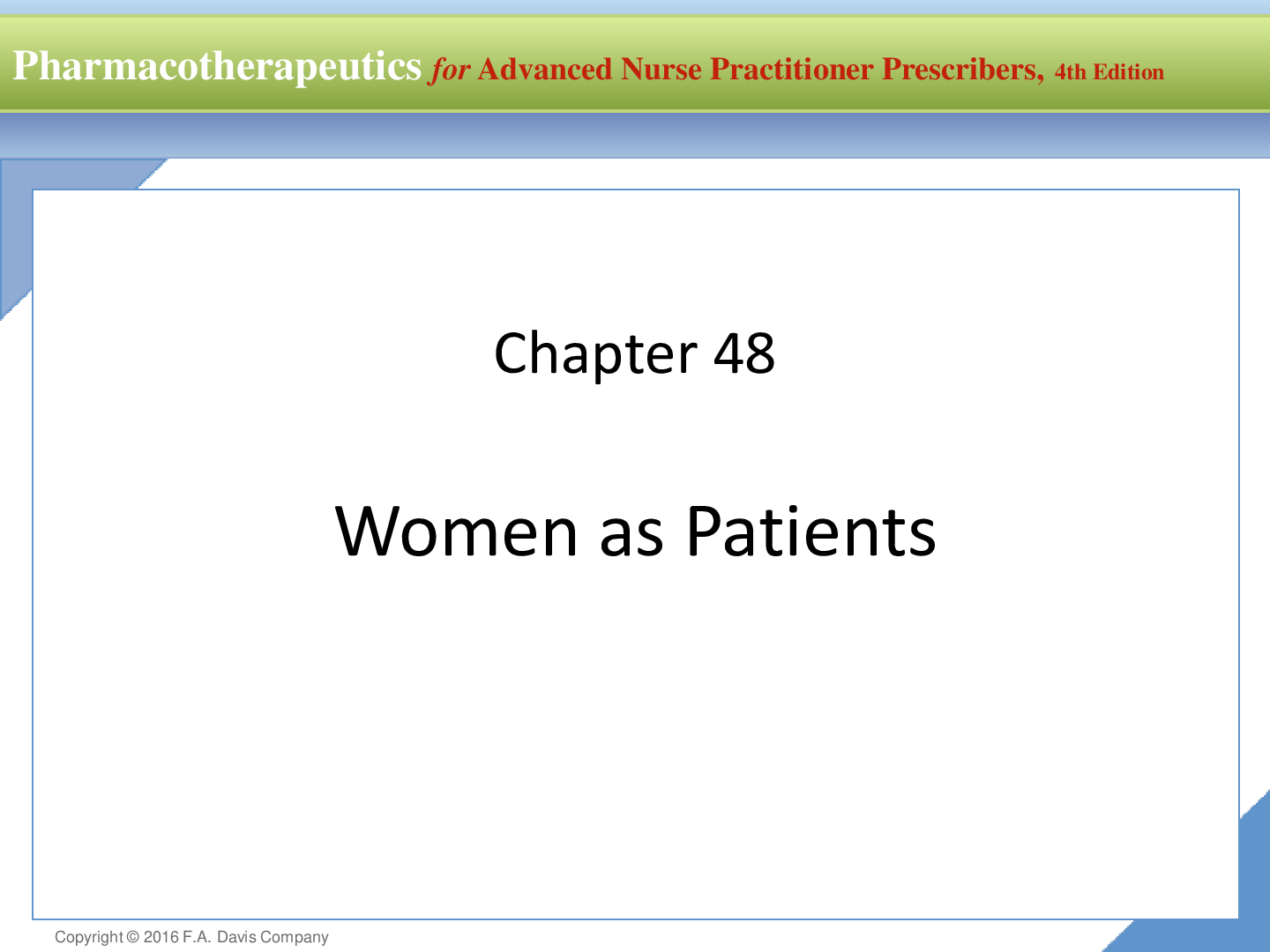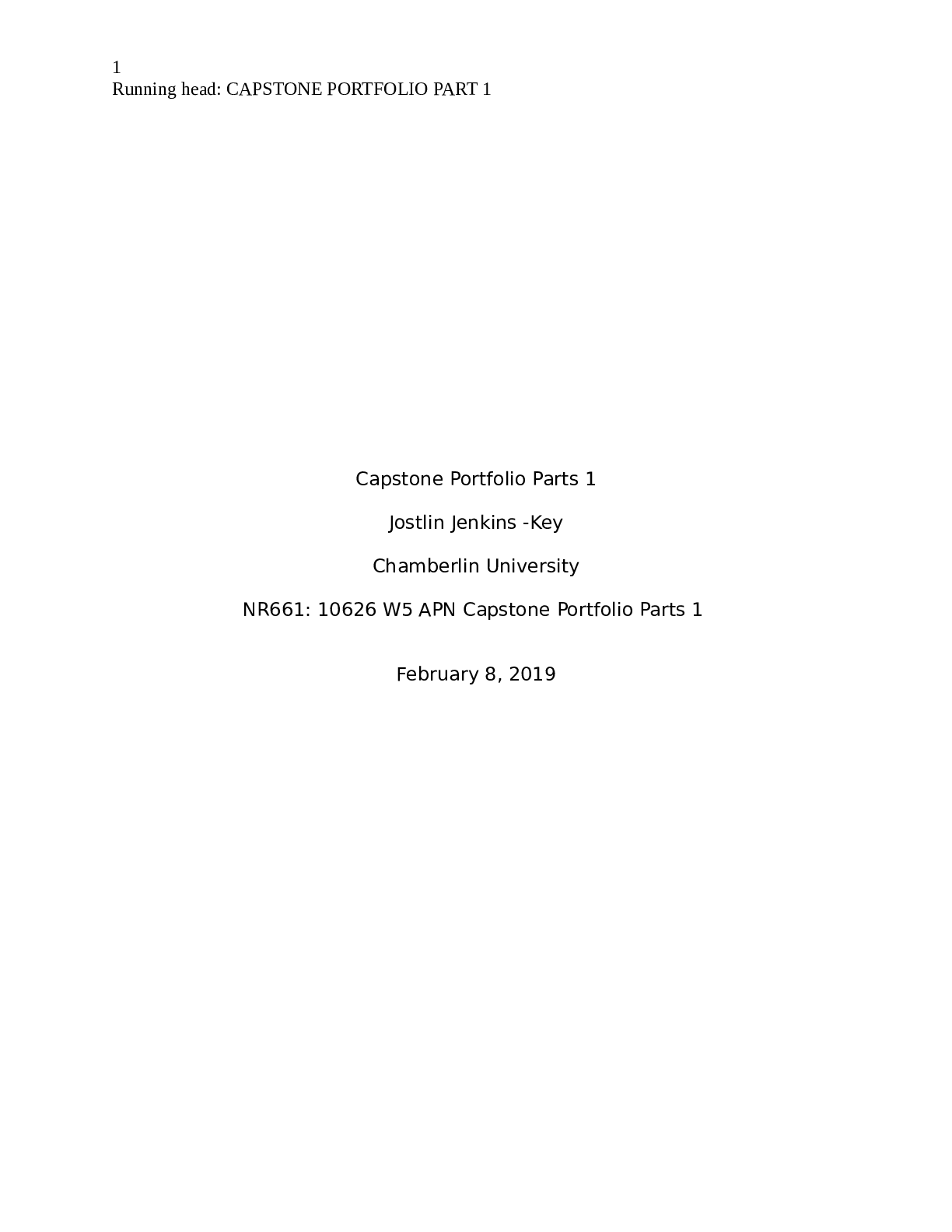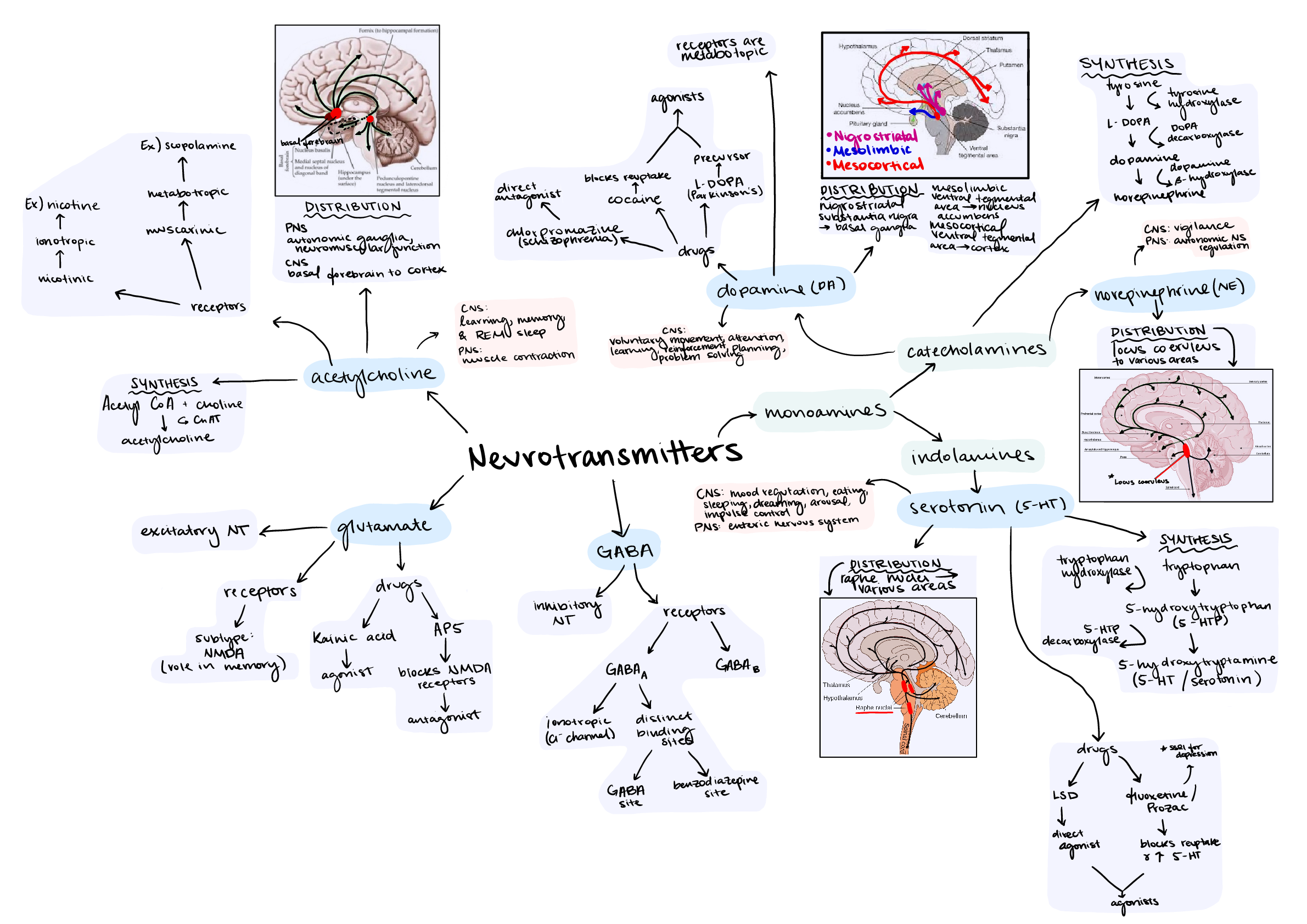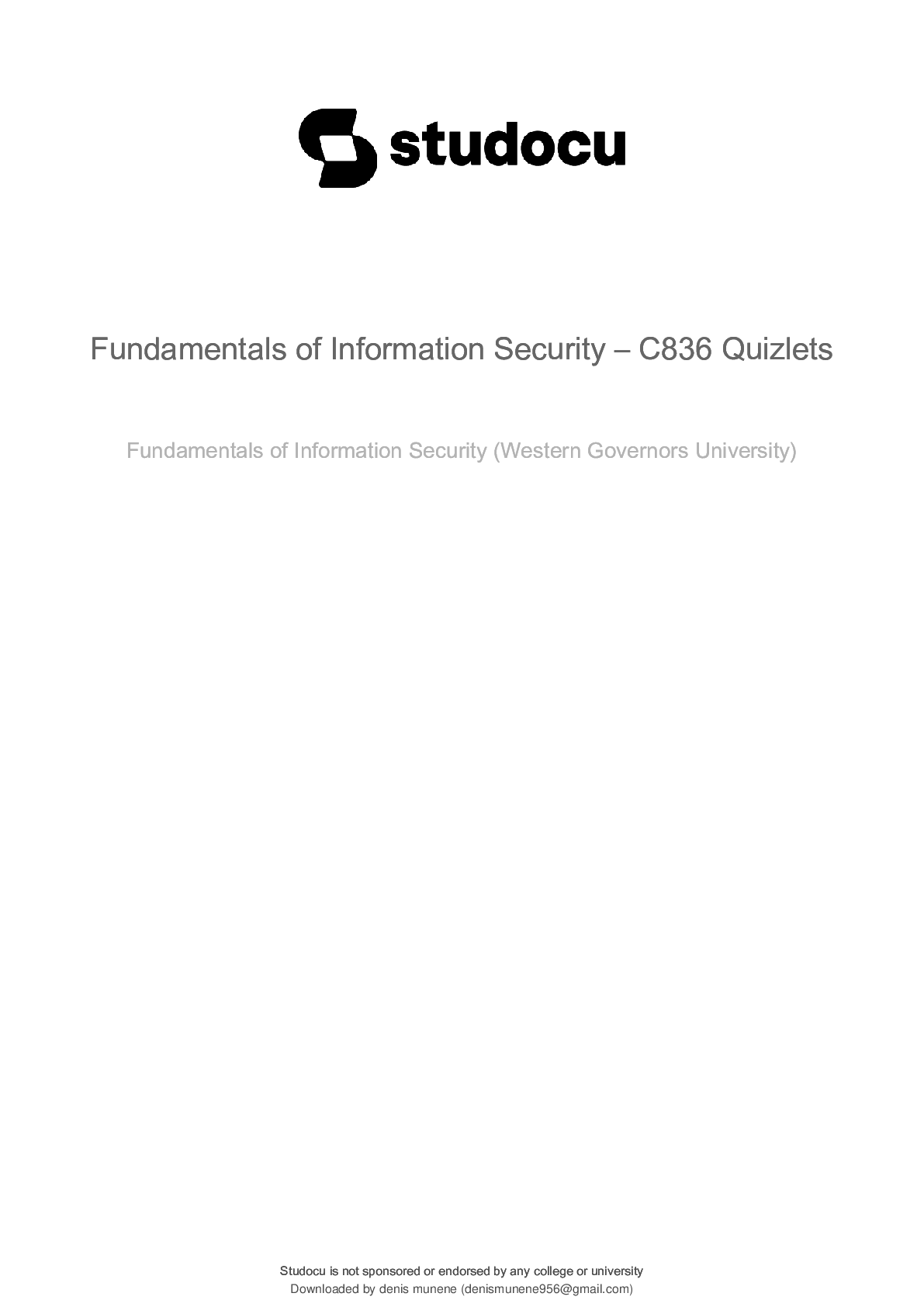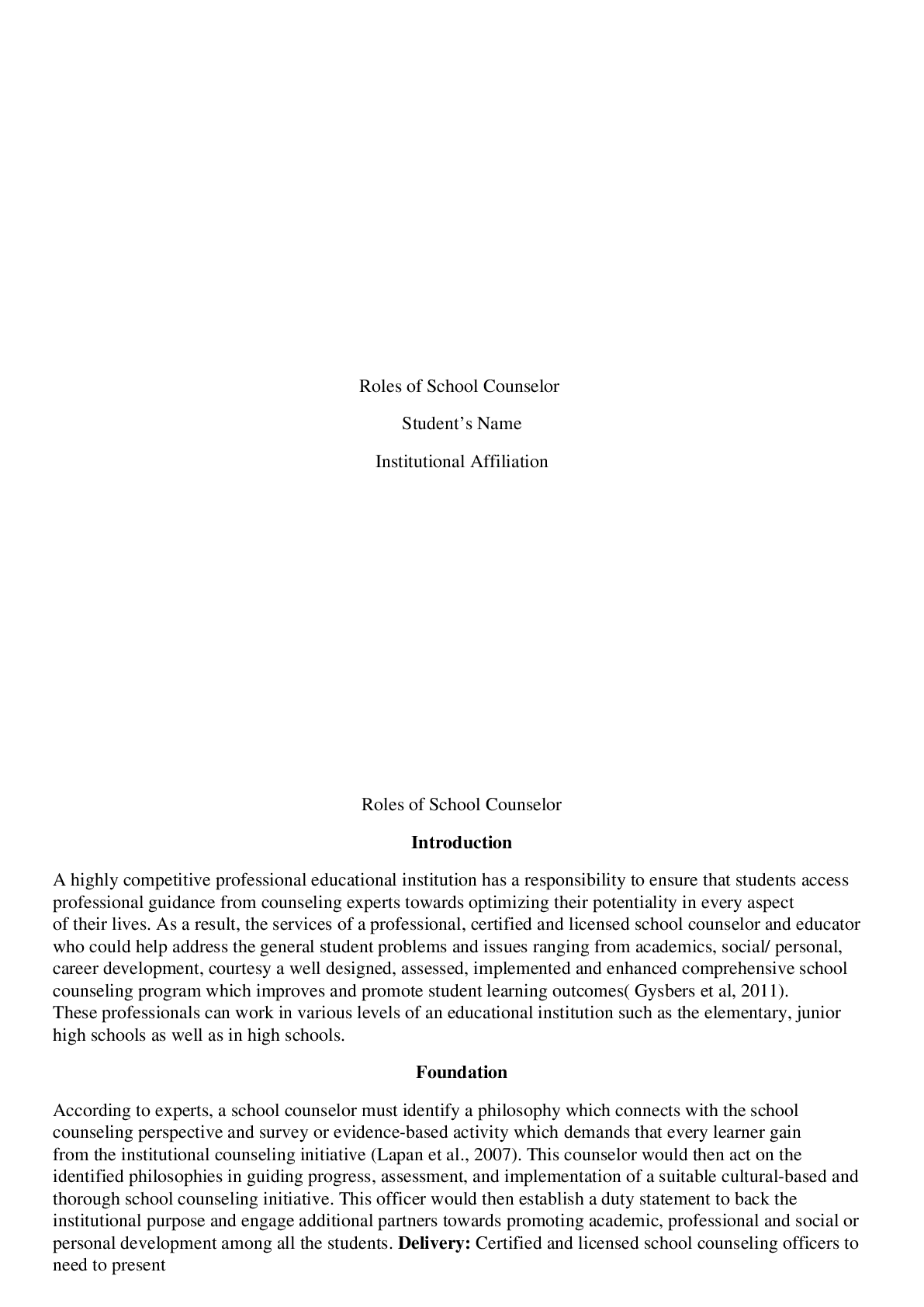Anatomy > Class Notes > anatomy medical notes. (All)
anatomy medical notes.
Document Content and Description Below
anatomy medical notes. UTSA MEDICAL NOTES ANTOMY Mass casualty patient tagging: ‣ Class 1 Resuscitation/Red: airway/cardiovascular ‣ Class 2 Emergent/Yellow: immediate tx but... not life threatening (fracture) ‣ Class 3 Urgent/Green: minor/not immediate (laceration) ‣ Class 4 Less Urgent/Black: expected to die so divert attention to red and yellow tags (penetrating head wound • Patient unresponsive without suspicion of head trauma the airway should be opened with the head-tilt/chin-lift maneuver • Patient unresponsive with suspected head trauma the airway should be opened with modified jaw thrust maneuver • Prevent hypothermia by removing wet clothing, cover with warm blankets, increase room temp, heat lamp, warm IV fluids • Tx poisoning with activated charcoal, gastric lavage (if done within 1 hour of ingestion),and aspiration ‣ Syrup of ipecac no longer used (induces vomiting) • BLS uses hands-on approach to restore ABC’s • VF or pulseless VT tx with CPR, IV access, dysrhythmics (epi or vasopressin), consider amiodarone, lidocaine, or magnesium • Alpha-1 drugs= vasoconstriction • Beta-1 drugs= increases HR and conduction through the AV node • Beta-2 drugs= bronchodilation • Dopamine= renal blood vessel dilation • Cerebral angiography: visualization of cerebral blood vessels ‣ Uses contrast dye ‣ Inform pregnant women dye can be harmful to fetus ‣ No food or water 4-6 hours prior ‣ History or bleeding or anticoagulation meds requires further considerations for monitoring after procedure for possible bleeding ‣ Assess BUN and Creatinine to determine kidney’s ability to excrete dye • EEG: ‣ Determine seizure activity, sleep disorder, behavioral changes ‣ No prior fasting required ‣ Wash hair prior ‣ Instruct patient to be sleep deprived for procedure because it promotes cranial stress and can induce seizures ‣ Increased electrical activity can be induced by flashing lights or hyperventilation for 3-4 minutes • Glascow Coma Scale: (not on exam) ‣ Best possible score is 15 ‣ Score < 8 associated with comatose and severe head injuries ‣ Eye opening: best eye response (ranges 4-1) ‣ Verbal: best verbal response (ranges 5-1) ‣ Motor: best motor response (ranges 6-1) • ICP Monitoring: ‣ Placed by surgeon for patients with low Glascow Score ‣ Biggest risk is infection ‣ Intraventricular catheter aka ventriculostomy ‣ Subarachnoid screw or bolt ‣ Epidural or subdural sensor ‣ Increased ICP S/S: severe headache, decreased LOC, irritability, dilated/pinpoint pupils, Cheyne-Stokes respirations, abnormal posturing (decerebrate,decorticate, flaccidity) ‣ Normal ICP= 10-15 • Lumbar puncture: ‣ Tests for MS, Meningitis, Syphilis ‣ Patient should void prior to procedure ‣ Patient should be in cannon ball position while on side or stretched over an overbed table ‣ Patient should remain lying flat for several hours after procedure to ensure clotsand to decrease risk of headache ‣ Increase fluids after procedure • PET scan determines tumor activity and response to tx • Somatic pain occurs in bones, joints, muscles, skin, or connective tissues • Visceral pain occurs in organs • NSAIDs/Acetaminophen: ‣ Patients with healthy liver should take no more than 4g/day ‣ Monitor for salicylism (tinnitus, vertigo, decreased hearing acuity) ‣ Prevent GI upset by taking them with food or antacids ‣ Monitor for bleeding with long-term use • Opioid A/E: constipation, orthostatic hypotension, retention, nausea, vomiting,sedation, respiratory depression • Meningitis: ‣ Prevention: Haemophilus Influenzae Type B vaccine and Meningococcal vaccine ‣ Viral Meningitis: no vaccine ‣ S/S: excruciating constant headache, nuchal rigidity (neck stiffness),photophobia, fever, chills, N/V, altered LOC, positive Kernig’s and Brudzinski's Signs, hyperactive deep tendon reflexes, tachycardia, seizures, red macular rash ‣ Kernig’s Sign: resistance and pain with extension of leg from flexed position(think Kernig’s=Knee) ‣ Brudzinski’s Sign: flexion of knees and hips occurring with deliberate flexion of the patient's neck ‣ Cloudy CSF= bacterial meningitis ‣ Clear CSF= viral meningitis ‣ Labs: Elevated WBC and elevated protein; Decreased Glucose (bacterial) ‣ Isolate patient as soon as Meningitis is suspected (contact precautions until antibiotics have been administered for 24 hours and oral/nasal secretions are no longer infectious. Patients with bacterial meningitis might need to remain on droplet precautions continuously ‣ Mgmt: Provide quiet environment and minimize exposure to bright lights;maintain bed rest with HOB elevated to 30 degrees, monitor for increased ICP;avoid coughing and sneezing to avoid increased ICP; seizure precautions ‣ Tx: Antibiotics (vancomycin with ceftriaxone or cefotaxime), anticonvulsants(phenytoin) ‣ Complications: increased ICP, SIADH (dilute blood or concentrated urine), septic emboli • Seizures: ‣ Seizures: abrupt and abnormal ‣ Epilepsy: chronic and recurring ‣ Risk factors: genetics, acute febrile state especially with children under 2 years old, head trauma, cerebral edema, infection, metabolic disorder (hypoglycemia or hyponatremia), exposure to toxins, brain tumor, hypoxia, acute substance withdrawal, fluid and electrolyte imbalances ‣ Generalized seizures usually begin with aura (alteration in smell, vision, hearing,or emotions) ‣ Tonic-Clonic: few seconds of stiffening of muscles and loss of consciousness followed by rhythmic jerking of extremities. Postictal phase follows tonic-clonic and is characterized by confusion and sleepiness ‣ Atonic Seizure: few seconds where muscle tone is lost which frequently results with falls ‣ Seizure Dx Tests: EEG (identifies origin of seizure activity), MRI, CAT scan, CSFanalysis ‣ During a seizure: if standing help the patient to the floor and hold head in lap,move furniture out of the way, turn patient to side, loosen restrictive clothing,do not restrain patient, do not attempt to open mouth or insert object into mouth, do not use padded tongue blade, document onset and duration ‣ After a seizure: maintain patient in side-lying position, check vitals, perform neuro checks, reorient and calm the patient, try to determine triggers ‣ Phenytoin: (anti-epileptic)-Blood tests determine therapeutic level -A/E: gingival hyperplasia-Decreases effectiveness of birth control and Warfarin ‣ Status Epilepticus:-Repeated seizure activity within 30-minute time frame-Maintain airway, provide O2, establish IV access, EKG monitoring, monitor pulse oximetry and ABG-Administer Diazepam or Lorazepam IV push followed by IV Phenytoin • Parkinson’s: ‣ Excess acetylcholine causes a decrease in Dopamine ‣ S/S: stooped posture, shuffling gait, tremors, muscle rigidity, bradykinesia, mask- like expression, difficulty chewing and swallowing, progressive difficulty withADL’s, mood swings, cognitive impairment ‣ Mgmt: monitor swallowing and maintain adequate nutrition; use thickened liquids; encourage exercise such as yoga; encourage ROM exercises; teach patient to stop occasionally when walking to slow down speed and reduce risk for injury; encourage patient to speak slowly and pause frequently ‣ Levodopa: Increases Dopamine levels and is usually combined with Carbidopa Because it allows for a smaller required dose and decreases A/E. “Wearing off”phenomenon occurs which can indicate a need for a change in dose or time of administration or the need for a “medication holiday”. ‣ Anticholinergics can be used as well ‣ Complications: Aspiration Pneumonia (have a nurse present when patient is eating, feed patient upright, and have suction equipment nearby) • Alzheimer’s: ‣ S/S: memory loss, judgement problems, and changes in personality ‣ Risk Factors: family history, environmental agents (herpes, metal, toxic waste) ‣ Dx: No definitive Dx until death (autopsy) ‣ Mgmt: Use calendar; short directions; be consistent and repetitive; reminisce with patient about the past; keep noise to a minimum; minimize clutter; avoid crowds; provide toileting schedule; remove scatter rugs; install door locks;provide good lighting especially on stairs; install railings on stairs and mark edge of steps with colored tape; place mattress on floor ‣ Donepezil: increases amount of Ach available ‣ Moderate cognitive decline: characterized by personality changes and obvious memory loss ‣ Moderately severe cognitive decline: characterized by assistance needed withADL’s ‣ Severe cognitive decline: increased episodes of urinary and fecal incontinence ‣ Very severe cognitive decline: characterized by loss of ability to respond to environment, speak, and control movement is lost; inability to eat without assistance and impaired swallowing; unrecognizable speech; gradual loss of ability to move extremities (ataxia) ‣ Brain tumor complications: SIADH (caused by damage to the hypothalamus) and DI • Multiple Sclerosis: ‣ Characterized by plaques of white matter that damage myelin sheath ‣ Risk Factors: viruses, cold climate, physical injury, emotional stress, pregnancy,fatigue, hot shower/bath ‣ S/S: diplopia, decreased visual acuity, tinnitus, decreased hearing acuity,dysphagia, dysarthria (slurred and nasal speech), muscle spasticity, ataxia,muscle weakness, nystagmus, bowel and bladder dysfunction, memory loss,impaired judgement, sexual dysfunction ‣ Dx: MRI shows plaques on brain and spine ‣ Tx: Cyclosporine (immunosuppressive agent), Prednisone (steroid), Dantrolene And Baclofen (muscle relaxers) • ALS: ‣ Degenerative disorder of upper and lower motor neurons ‣ Progressive paralysis; starts in extremity and moves toward the center of the body;affects respiratory system which eventually causes respiratory failure/death;muscle weakness/atrophy; dysphagia ‣ Death within 3-5 years of onset ‣ Mgmt: keep patent airway, suction and intubate as necessary ‣ Riluzole: helps deterioration of neurons ‣ Complication: pneumonia • Myasthenia Gravis: ‣ Autoimmune disorder that causes muscle weakness ‣ Associated with antibodies that affect Acetylcholine uptake ‣ Periods of exacerbation and remission ‣ Can be triggered by fatigue, illness, pregnancy, hot baths/showers, infection ‣ Hyperplasia of thymus occurs ‣ Exacerbation S/S: weakness, diplopia, impaired respiratory function,bowel/bladder dysfunction, and drooping eyelids (ptosis) ‣ Exacerbations can mimic a cholinergic crisis ………………………………..CONTINUED…………………………. [Show More]
Last updated: 1 year ago
Preview 1 out of 43 pages
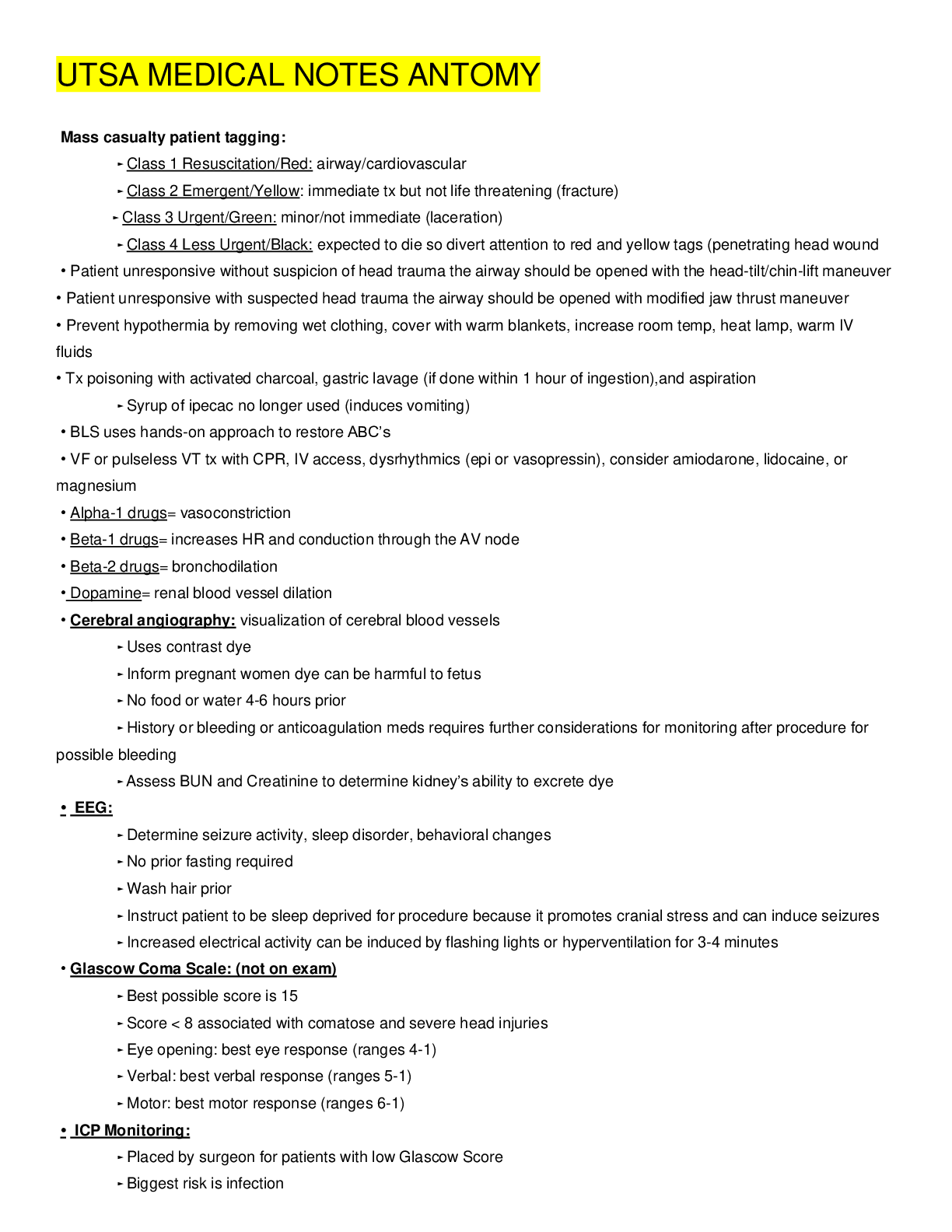
Reviews( 0 )
Document information
Connected school, study & course
About the document
Uploaded On
Jan 20, 2021
Number of pages
43
Written in
Additional information
This document has been written for:
Uploaded
Jan 20, 2021
Downloads
0
Views
83


